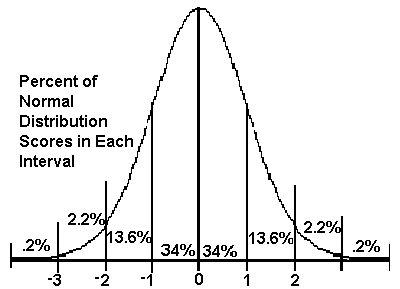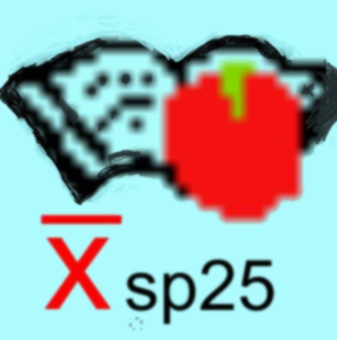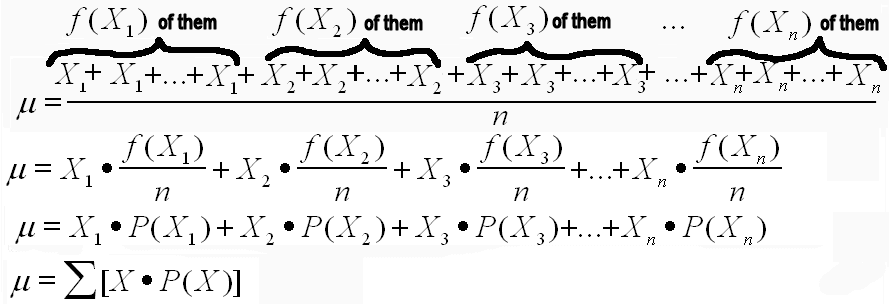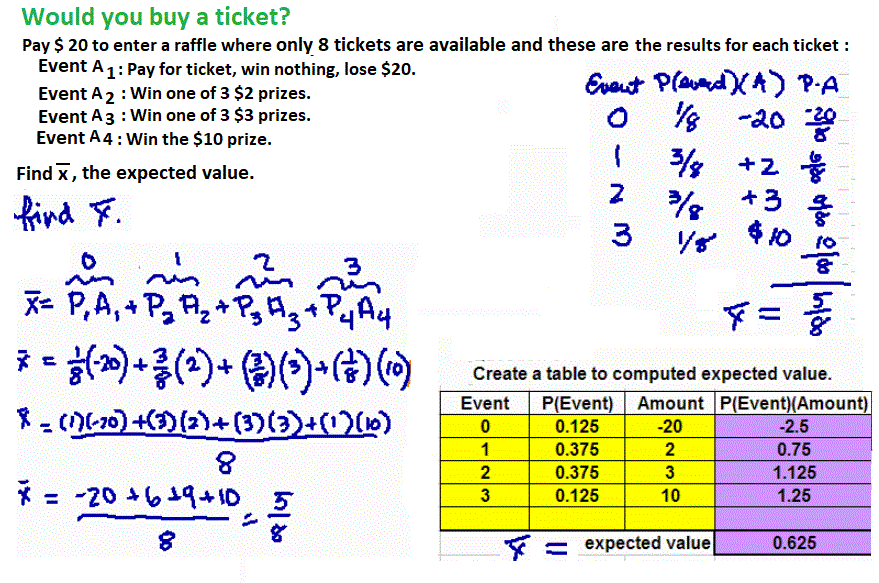-
The average is the sum of the products of the event and the probability of the event.
-
- In the example below, the task is to compute the average of test grades. These steps were chosen to complete the task, but, also
to illustrate where the definition of the average as the sum of the products of the event and its probability is related to work already familiar to the reader.
-
-
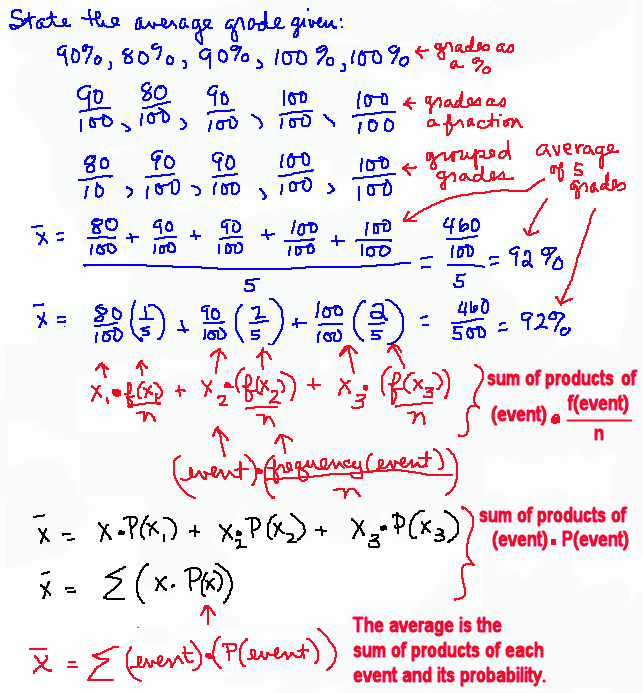
-
- The most important work focuses on the fact that rather than add individual terms, the terms may be grouped by frequency.
-
-
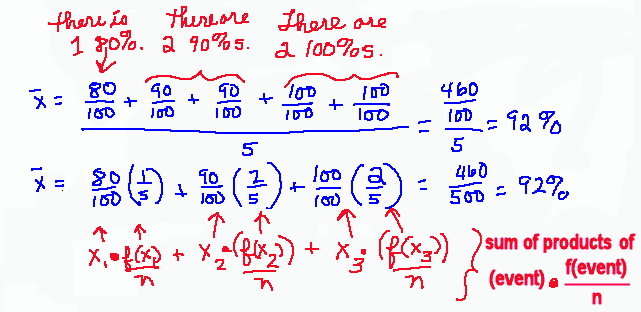
-
- When the frequency is divided by the number of things to be averaged, a probability is obtained.
The probability of an event is the frequency divided by the number of events in the sample space, P(event) = f/n.
-
- This definition of average, or expected value, may seem of little value here, but, the number in the sample space,
the number of tests to be averaged, is only 5. Sometimes the size of the sample space is very large. Sometimes the size of the sample space is not given. Yet,
the average or expected value of a probability distribution may be computed using the formula, sum of the products of the event and the probability of the event.
-

|
